Roman Emperors
The Roman emperor was the ruler of Rome during the period of imperial rule. In 27 BC Rome transformed into an empire from a republic.
Julius Caesar played the most vital role in this transformation and his son, Octavian (Augustus) is commonly considered as the first Roman Emperor.
However, some historians believe that Julius Caesar was also an emperor, considering his unmitigated control of the senate and army which made him absolutely powerful.
Imperial Rome was different from the days of the kingdom.
Emperor could exercise authority only if he had control over the senate and army.
Roman emperors used titles like ‘Augustus’, ‘Caesar’ and ‘Imperator’.
They also used the religious title of ‘Pontifex Maximus’.
Roman Emperor Facts for kids
- Julius Caesar was born on July 13, 100 BC.
- Augustus was Rome’s first emperor.
- Nero loved arts, music, and theater.
- Hadrian built a famous wall in Britain.
- Constantine made Christianity legal.
- The western Roman Empire fell in 476 AD.
- The byzantine Empire lasted till 1453 AD.
Julius Caesar
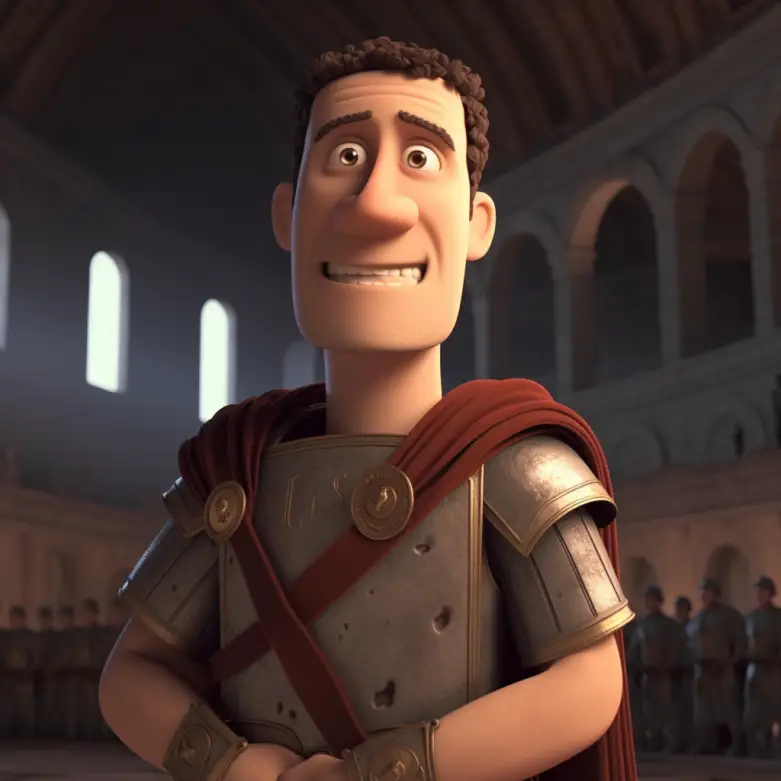
Julius Caesar, the renowned Roman leader, was born in Rome, Italy, on July 12, 100 BC. He quickly rose through the ranks of the military, displaying exceptional leadership skills and bravery in battle. His popularity with the people of Rome was boosted by his military victories and the wealth he shared from his conquests.
Caesar’s political alliance with two powerful men, Pompey and Crassus, known as the First Triumvirate, gave them control over Rome’s government for a period.
He began his conquest of Gaul in 58 BC, which lasted for eight years, and expanded Rome’s territory, further increasing his popularity. However, tensions grew between Caesar and Pompey, leading to a civil war in 49 BC, which Caesar ultimately won.
After becoming the most powerful person in Rome, Caesar made significant changes to the government, introducing reforms to help the poor. However, on March 15, 44 BC, he was assassinated by a group of senators who feared his growing power.
His death marked the end of the Roman Republic and the beginning of the Roman Empire. Today, Julius Caesar is remembered as a great military leader and an important figure in world history.
Nero
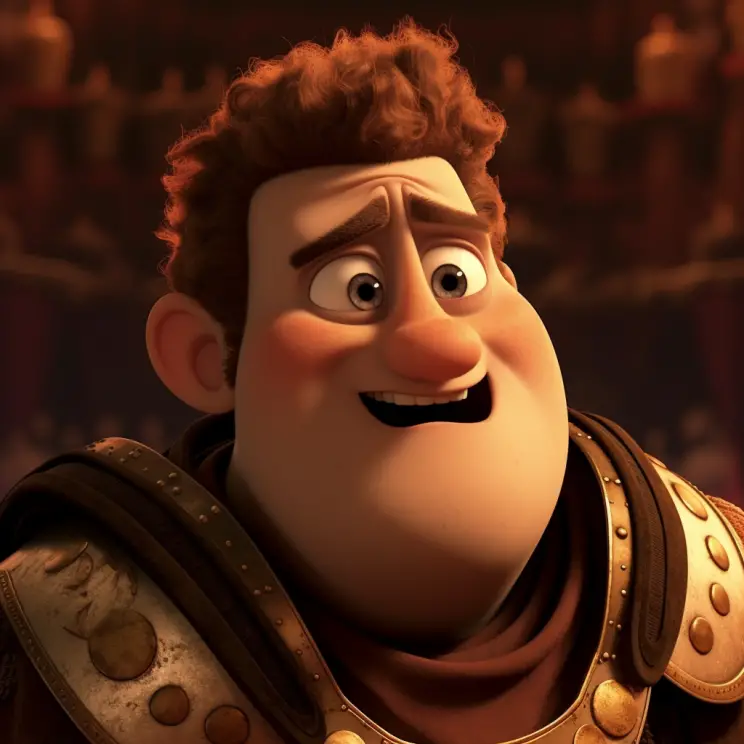
Nero, born on December 15, 37 AD in Antium, Italy, was a Roman emperor who ruled from 54 AD to 68 AD. He ascended to the throne at the age of 17 after the death of his stepfather, Emperor Claudius.
Nero was a lover of arts, music, and theater, and he often performed in public, taking part in singing, acting, and chariot racing competitions. However, his reign was also marked by several scandals and controversies.
One such event was the Great Fire of Rome in 64 AD. Many sections of the city were destroyed, and there were rumors that Nero had set the fire to rebuild Rome according to his own desires.
Although there is no substantial proof to corroborate this claim, Nero blamed and persecuted Christians, a new religious group, for starting the fire to shift the blame.
His heavy taxation, lavish spending, and mistreatment of the people led to increasing unpopularity during his reign.
Nero’s rule ended with a revolt by several military officers and provincial governors in 68 AD, leaving him with no support. On June 9, 68 AD, he committed suicide, ending his reign and the Julio-Claudian dynasty
Augustus

Augustus, the first emperor of the Roman Empire, held significant importance in ancient history. Born as Gaius Octavius in 63 BC, in Rome, Italy, he was the great-nephew of Julius Caesar, who named Octavius as his heir in his will.
After the assassination of Julius Caesar in 44 BC, Octavius formed the Second Triumvirate with Mark Antony and Marcus Lepidus, leading to the defeat of Caesar’s assassins and taking control of the Roman Republic. However, this alliance was short-lived, and Octavius and Mark Antony eventually became enemies.
In 31 BC, Octavius emerged victorious in the Battle of Actium against Mark Antony and Queen Cleopatra of Egypt, making him the most powerful man in Rome.
This victory led to the Roman Senate giving him the title “Augustus,” meaning “the revered one,” and he became the first Roman emperor in 27 BC. Augustus’s reign marked the beginning of the Pax Romana, or Roman Peace, a period when he brought peace, stability, and prosperity to the Roman Empire.
During his reign, he made significant improvements to the city of Rome, including building roads, aqueducts, and public buildings, and also reformed the Roman government, making it more efficient and organized.
Augustus governed for over 40 years until his death on August 19, 14 AD. His legacy as a great leader and a key figure in the development of Western civilization continues to be celebrated.
Augustus’s reign marked the beginning of the Roman Empire, which endured for centuries and had a lasting impact on world history.
Claudius
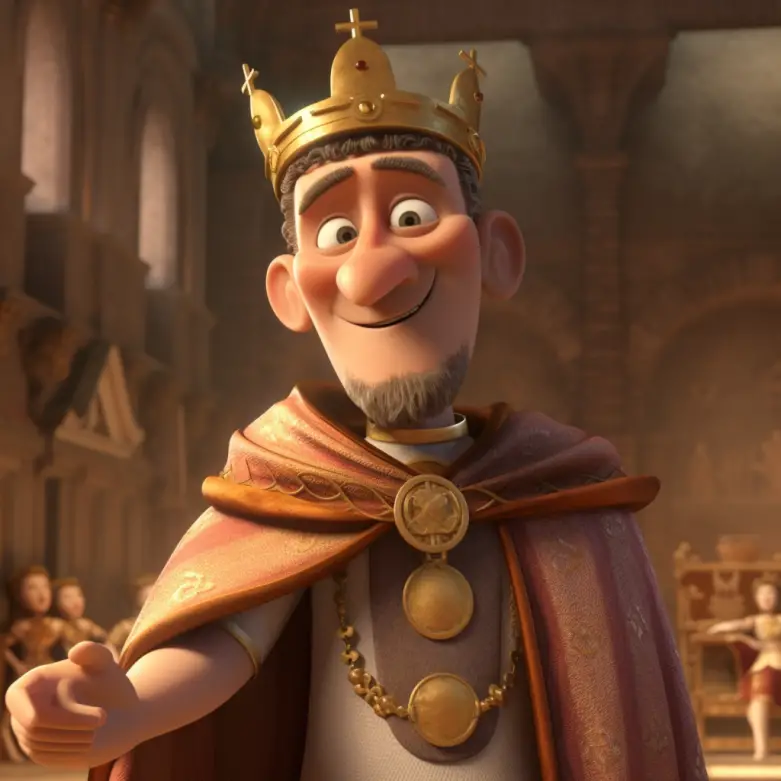
Tiberius Claudius Caesar Augustus Germanicus, a member of the Julio-Claudian dynasty, became the Roman emperor after his nephew Caligula was assassinated in 41 AD.
Despite his physical disabilities, Claudius proved to be a capable and intelligent ruler during his reign from 41 AD to 54 AD.
Claudius expanded the Roman Empire by conquering new territories, including Britain in 43 AD, and improved Rome’s infrastructure by constructing roads, aqueducts, and public buildings.
He also implemented legal reforms that improved the lives of Roman citizens, particularly the poor and enslaved individuals.
Despite his successes, Claudius faced an untimely death in 54 AD under suspicious circumstances, with many believing his wife, Agrippina the Younger, poisoned him to ensure her son Nero would become emperor.
Claudius’s legacy lives on as a respected Roman emperor who contributed significantly to the growth and development of the empire.
Constantine
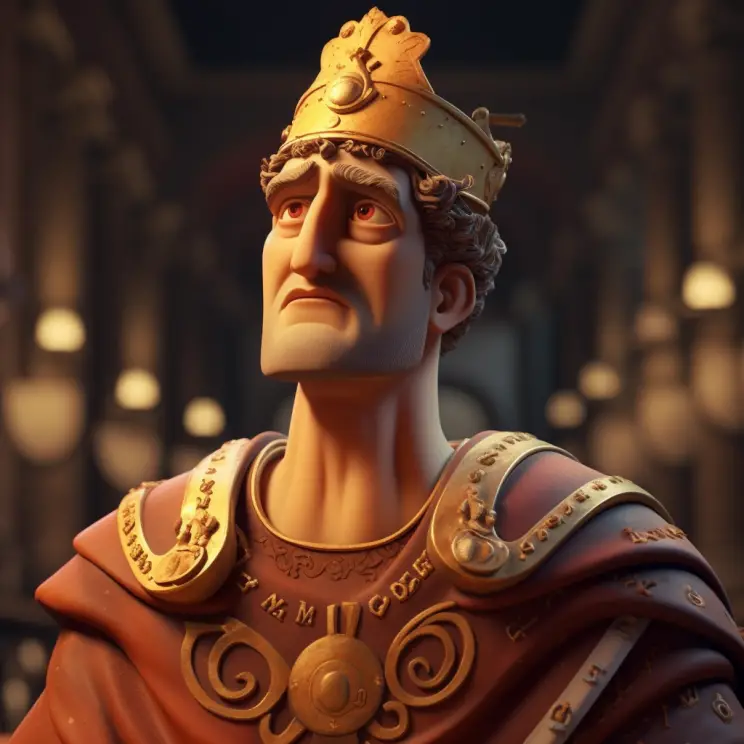
Constantine the Great, a skilled military leader, was the Roman Emperor from 306 AD to 337 AD. Born on February 27, 272 AD, in Naissus, Moesia (now Niš, Serbia), he played a crucial role in the growth of Christianity in the Roman Empire.
Before Constantine, the empire was divided, with different emperors ruling various parts. However, he fought several battles to unite the empire under his rule, including the famous Battle of the Milvian Bridge against rival Maxentius in 312 AD.
Before the battle, Constantine had a vision that he believed was a message from the Christian God. He saw a cross in the sky with the words “In this sign, you will conquer.” Converting to Christianity, he painted the Christian symbol on his soldiers’ shields, and after his victory, he became a strong supporter of Christianity.
He issued the Edict of Milan in 313 AD, which made Christianity legal and granted religious freedom to all people in the Roman Empire.
Additionally, Constantine built many churches, such as the Church of the Holy Sepulchre in Jerusalem and the original St. Peter’s Basilica in Rome.
He also moved the capital of the Roman Empire from Rome to Byzantium, renaming it Constantinople (now Istanbul, Turkey), which would eventually become the center of the Eastern Roman Empire, also known as the Byzantine Empire.
Constantine the Great passed away on May 22, 337 AD, and is remembered as a significant figure in both Roman and Christian history for his contributions to the growth of Christianity and the establishment of the Byzantine Empire.
Caligula

Caligula, the Roman emperor who ruled from 37 AD to 41 AD, was born on August 31, 12 AD, in Antium, Italy.
He was also known by his real name, Gaius Julius Caesar Augustus Germanicus, and was a part of the Julio-Claudian dynasty, which included other well-known emperors such as Augustus and Nero.
Upon the death of his great-uncle, Emperor Tiberius, Caligula became emperor. His initial rule was met with optimism as he was the popular son of a beloved Roman general, Germanicus. However, his reign quickly took a dark turn.
As an emperor, Caligula made several strange and controversial decisions. He spent vast amounts of money on lavish parties and expensive building projects, leading to financial woes for the empire.
Caligula also insisted on being worshiped as a god, and would often behave in bizarre ways, such as appointing his favorite horse as a senator. Some historians speculate that he suffered from a mental illness, which could explain his erratic behavior.
Nevertheless, it is important to note that some of the stories about Caligula may have been exaggerated or even fabricated by his enemies.
Caligula’s reign grew increasingly unpopular, and in 41 AD, he was assassinated by members of the Roman Senate and his own bodyguards.
His death marked the end of his brief and tumultuous rule, and he was succeeded by his uncle, Claudius.
Despite his controversial legacy, Caligula remains a notable figure in Roman history, whose rule was marked by both extravagance and cruelty.
Hadrian
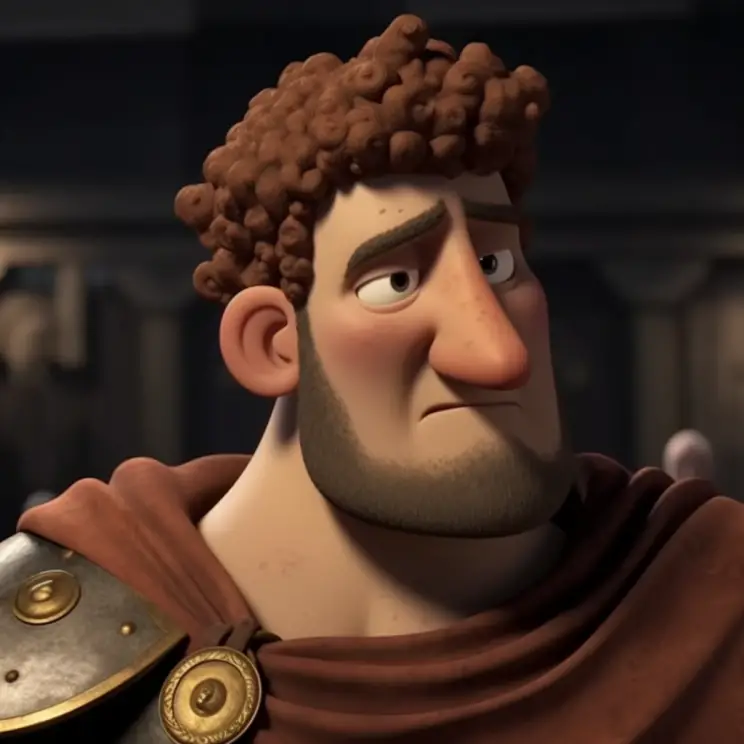
Hadrian, a member of the Nerva-Antonine dynasty, was a Roman emperor who ruled from 117 AD to 138 AD. He was born in Italica, Hispania (now Spain) on January 24, 76 AD.
Hadrian was known for being a wise and capable ruler who focused on consolidating and protecting the Roman Empire, rather than expanding it further.
To strengthen the empire’s defenses, Hadrian personally oversaw the construction of forts, walls, and other infrastructure throughout almost every province of the empire.
One of his most famous building projects was Hadrian’s Wall, a stone wall built across northern Britain to protect Roman Britain from the northern tribes and mark the northern limit of the empire.
Additionally, Hadrian was a patron of the arts and Greek culture. He supported many artists and architects, under whose rule, several important buildings were constructed, including the Pantheon in Rome and the Temple of Venus and Roma.
He even had a large villa built for himself near Rome, called the Villa Adriana, which was a masterpiece of Roman architecture.
Hadrian passed away on July 10, 138 AD, and was succeeded by his adoptive son Antoninus Pius. Today, he is remembered as a strong and wise ruler who focused on securing the borders of the Roman Empire and promoting arts and culture.
From Rome to Byzantium: The Final Emperors
This title was last used by a Roman emperor in 387 AD when Gratian surrendered it to Pope Siricius.
Romulus Augustus is widely accepted as the last Roman emperor of the Western Roman Empire. He abdicated his throne in 476 AD, which also spelled the end of the Western Roman Empire.
However, the Eastern Roman Empire continued to exist for another thousand years in some form till the ‘Siege of Constantinople’ by Ottomans in 1453.
The Eastern Roman Empire was also called Byzantine Empire and its last emperor was Constantine XI.
Powers of the Emperor
The first Roman emperor, Augustus refused to have supreme authority like the Roman kings of the past.
He preferred to have several titles and offices which gave him authority over all major state bodies.
Roman Emperor’s title ‘Princeps Senatus’ meant he oversaw the working of the senate, convened their sessions, commanded their agenda, and set forth rules and regulations for the senate.
As ‘Pontifex Maximus’, the emperor had the religious authority to conduct religious ceremonies, consecrate temples, control the Roman calendar, and appoint the vestal virgins.
Emperors also exercised the legal authority of a tribune. He could punish any civilian or citizen for a crime, could pardon anyone, call a senate session anytime he deemed appropriate, and could veto the senate’s decisions and decrees.
Imperial Dynasties
The first imperial dynasty was the Julio-Claudian dynasty which was founded by Augustus in 27 BC. It had five emperors in all.
They were Augustus, Tiberius, Caligula, Claudius and Nero. After Nero’s assassination, a year of civil war and strife followed.
This period is known as ‘The Year of Four Emperors’.
At the end of this period, Vespasian assumed the office of the emperor and founded the Flavian Dynasty in 69 AD.
Other well-known imperial dynasties were the Nerva-Antonine dynasty, Severan dynasty, Gordian dynasty, Constantinian dynasty, Valentinian dynasty, and Theodosian dynasty.
Eastern Roman Empire
Roman Empire expanded its territories greatly with the passage of time.
The areas also included Mediterranean regions in the east that were previously under Greek influence and were culturally very different from the western regions of the empire.
The two regions, however, remained part of the empire and maintained their different cultures and social outlook. In 293 AD, Emperor Diocletian, administratively divided east and west and appointed a co-emperor to share power with him.
This system existed till 313 AD, after which the empire was recentralized. After the fall of western regions, the Eastern Empire or Byzantine Empire continued to exist till 1453 AD.
Several imperial dynasties ruled it till its eventual demise.
Famous Roman Emperors:
There are many Roman emperors who are remembered for different reasons in history. Augustus was the first emperor of the Roman Empire.
Caligula is known for his tyrannical rule. Nero is remembered for his indifference while Rome burnt.
Vespasian is known for building The Colosseum. Other well-known emperors were Titus, Marcus Aurelius, Constantine I, and Commodus.



